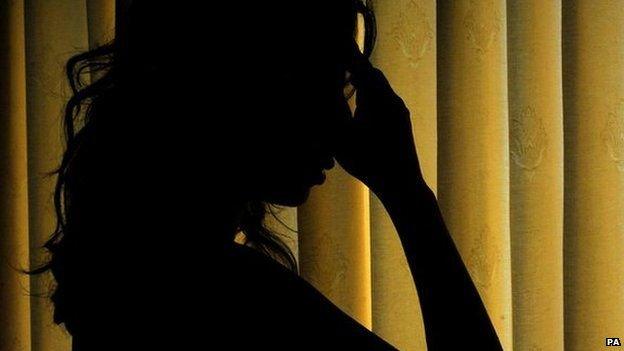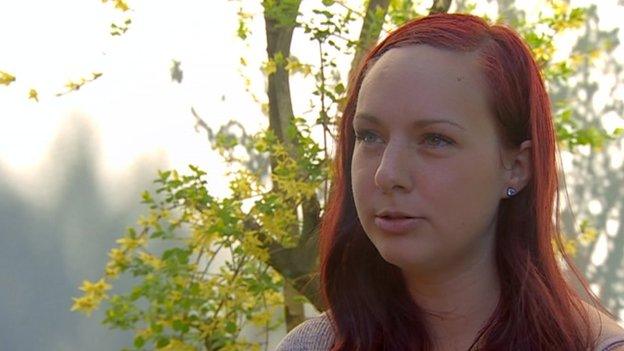Self-harm among Wales' young hits five year high
- Published

Almost four times as many girls were treated for self-harming as boys
Self-harm among young people in Wales has hit a five-year high, according to new Welsh government figures.
More than 1,500 patients aged between 10 and 19 were treated at Welsh hospitals between 2013 and 2014.
Last year, almost four times as many girls as boys were admitted for self-harm treatment in Wales.
Mental health charities are calling for more to be done in schools to teach emotional resilience to prevent self-harm.
The Welsh government is due to publish an action plan on self-harming in June - its second in six years.
'Raising awareness'
Dr Ann John, from Swansea University, who is leading the plan, says an important part of the strategy involves reducing the stigma associated with self-harm.
"The first strategic objective is about raising awareness. It's about training those people who are priority care providers who first come into contact with people suffering with these issues."
The plan also recommends developing the school counselling service to include pupils in Year 6 at primary schools and combating bullying.
More than 1,200 girls, compared with about 300 boys, were admitted to Welsh hospitals for self-harming last year.
Psychologists say the reasons for this gender gap are complex.

More than 300 boys were treated for self-harming in Wales last year
Some suggest boys do not seek help as easily and they are therefore absent from the figures, while others argue girls find it harder to express anger and are thus more prone to self-harm.
A recent education review recommended that health and well-being be put at the centre of the Welsh curriculum.
Katie Dalton, from mental health charity Gofal, said she would like to see this idea taken seriously.
"Pupils need to know that there are support systems out there and that it is alright to feel unwell with their emotions and mental health and its OK to talk to people," she added.
'Complex reasons'
Experts agree the reasons for the rise in self harm are complex.
A Welsh government spokeswoman said: "National Institute for Health and Care Excellence quality standards, which changed in June 2013, recommend that all children under 16 are assessed differently following self-harm.
"It is not possible to be certain whether the increase in admissions identifies a real increase in the behaviour of children and young people or reflects a change in clinical practice and more decisions being made to admit children for detailed assessments.
"We expect all children to receive safe services to meet their clinical and emotional needs following any episode of self-harm."

Case study: 'The last resort'

Hollie Owen describes her self-harming as 'the last resort'
Hollie Owen began self-harming when she was just 11 years old. She says it was triggered by a range of difficulties in her life.
She said: "There was a lot of things going on at home, school, bullying, lots of different pressures from all different areas. It was like the last resort, but it became addictive and secretive."
Hollie said she is now on the road to recovery thanks to the Amber Project, a specialist self-harm support group in Cardiff.

- Published4 May 2011

- Published7 January 2015
.jpg)
- Published7 January 2015
